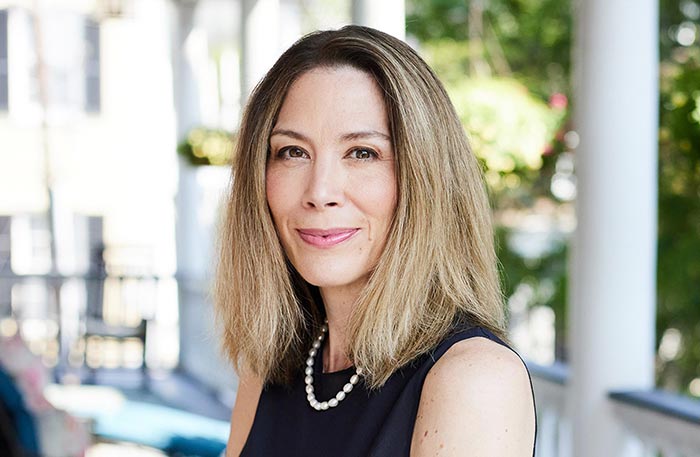School district to hit ground running on Measure G
As of today, there are still a few stray, last-minute mail-in ballots to be counted. Still, it appears the community spoke, and spoke loudly, on Tuesday in favor of Measure G.
The $58 million general obligation bond—intended to fund repairs and upgrades at Claremont’s aging school sites—got a yes vote from some 66 percent of the city’s voters. All the initiative needed to pass was 55 percent.
Considerable work went into the Measure G’s creation and passage.
This including a process of winnowing down more than $111 million in identified needs to an amount the community would be likely to get behind. The final project list was reached after 39 community meetings, presided over by Superintendent Jim Elsasser and Assistant Superintendent of Business Services Lisa Shoemaker.
Ms. Shoemaker has spent much of her workday recently answering questions about the bond measure and getting the district ready for its possible passage.
Once she was off the clock and legally able to campaign, the administrator spent hours walking precincts, trying to convince voters that an infusion of facilities money is crucial to the district.
Residents agreed.
With that done, you’d think CUSD staffers would want to take a quick breather. Instead, they’ll “hit the ground running,” Ms. Shoemaker said.
The reason for haste is twofold. First, by initiating and completing projects as soon as possible, Claremonters will know their money has made an immediate and beneficial impact on local schools.
CUSD also hopes to line up and complete projects as quickly as possible to take advantage of historically low interest rates as well as competitive construction costs.
“We want to take advantage of a favorable market for issuing bonds,” Ms. Shoemaker said.
One factor in the positive building climate may not last long.
Many other districts across the state passed local school facilities bonds. What’s more, Proposition 51—which allocates $9 billion in bonds for facilities projects at California’s K-12 schools, community colleges and vocational education sites—got the green-light from voters.
Ms. Shoemaker said the widespread support for school bonds shows that voters recognize there are no other funding mechanisms in place for the maintenance and upgrade of educational facilities.
More bond money, however, means many districts and educational institutions will be sending facilities projects to bid in the coming months. When there’s a lot of work, construction companies tend to raise prices. Ms. Shoemaker said it behooves the district to move fast before costs escalate too much.
CUSD will likely begin its list of projects with those that will meet with easy approval from the state without triggering ADA requirements. These include adding an HVAC system to the Claremont High School gym.
A study conducted earlier this year to determine the potential cost of renovating the pools at El Roble and CHS determined that fixing them won’t trigger much by way of ADA requirements. Thusly, the pools are likely to find their way to the top of the district’s to-do list, Ms. Shoemaker said.
The district will probably have the same company undertake work on the two pools simultaneously in order to achieve economy of scale, she noted.
The district will begin seeing some bond money soon, and is reaching out to architects for bids. CUSD will be able to embark on some projects as soon as spring or summer, Ms. Shoemaker said. There are, however, timing issues to weigh.
There are currently no swimming programs at El Roble, where the pool has been drained for a few years. CHS, by contrast, has an active water sports program. Ms. Shoemaker said the district will consult with administrators and coaches to craft a timeline for pool renovations that has the minimum impact on student athletes.
In the spring, CHS’ swim team and girls water polo compete so it would seem appropriate for the work to be done in the summer. This would also ensure minimum impact on the campus from the noise, dust and fencing that accompanies construction.
However, construction tends to cost more in the summer than work done during the school year, because so many districts want to get jobs done while students are on vacation. There’s also the possibility that a job begun in the summer could extend into the fall, when a closed pool could affect boys water polo.
These considerations as well as the bidding process are being discussed by a project committee featuring a project manager, Ms. Shoemaker, CUSD Facilities Director Rick Cota and his assistant Terryl Noreen, senior coordinator of facilities and custodial operations, among others.
Along with upgrades to the CHS gym and repair of the two pools, bond projects include the upgrade of classrooms and other learning environments; the replacement of portable classrooms with longer-lived modular classrooms; the refurbishment of locker rooms at CHS and El Roble and re-roofing at every school site except CHS, which was re-roofed a year ago.
Other work includes renovation of the student center and cafeteria area at CHS and a district-wide upgrade of HVAC and electrical systems, with an eye on greater energy efficiency.
Ms. Shoemaker says the district was conservative with project funding, building in a cushion in the budgets in case the cost or scope of a project grows due to unforeseen factors like market changes or issues with safety and ADA compliance.
What will the district do with extra money, should some of the jobs come in under budget?
“We have $50 million more in identified school facilities needs,” Ms. Shoemaker said without hesitation, pointing to the identified facilities needs that didn’t make the cut.
The last few years, district staff has been largely consumed with curriculum relating to the implementation of the Common Core educational standards.
The district will continue to have a large focus on curriculum. For instance, science books have not been approved, much less selected, for elementary school districts hoping to adhere to Common Core.
Still, taking a new direction—using hard-won money and a clear directive to upgrade district facilities—is a refreshing change, Ms. Shoemaker said.
It’s a big job, but she and her colleagues are delighted to start transforming the landscape of Claremont schools.
“I’m super-excited that the citizens of this community recognized the need for clean, modern educational facilities to enhance student learning,” Ms. Shoemaker said.
—Sarah Torribio
storribio@claremont-courier.com








0 Comments